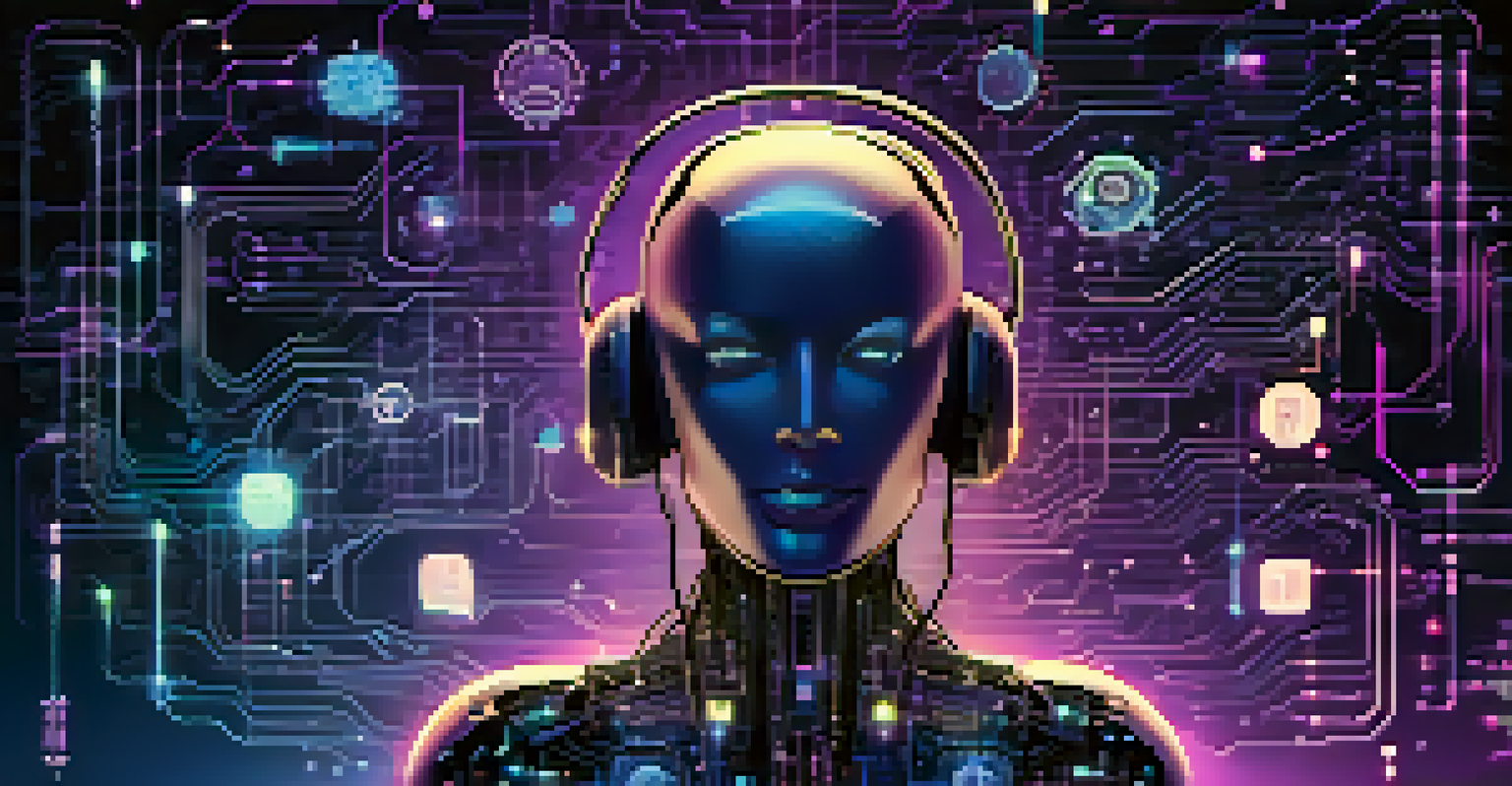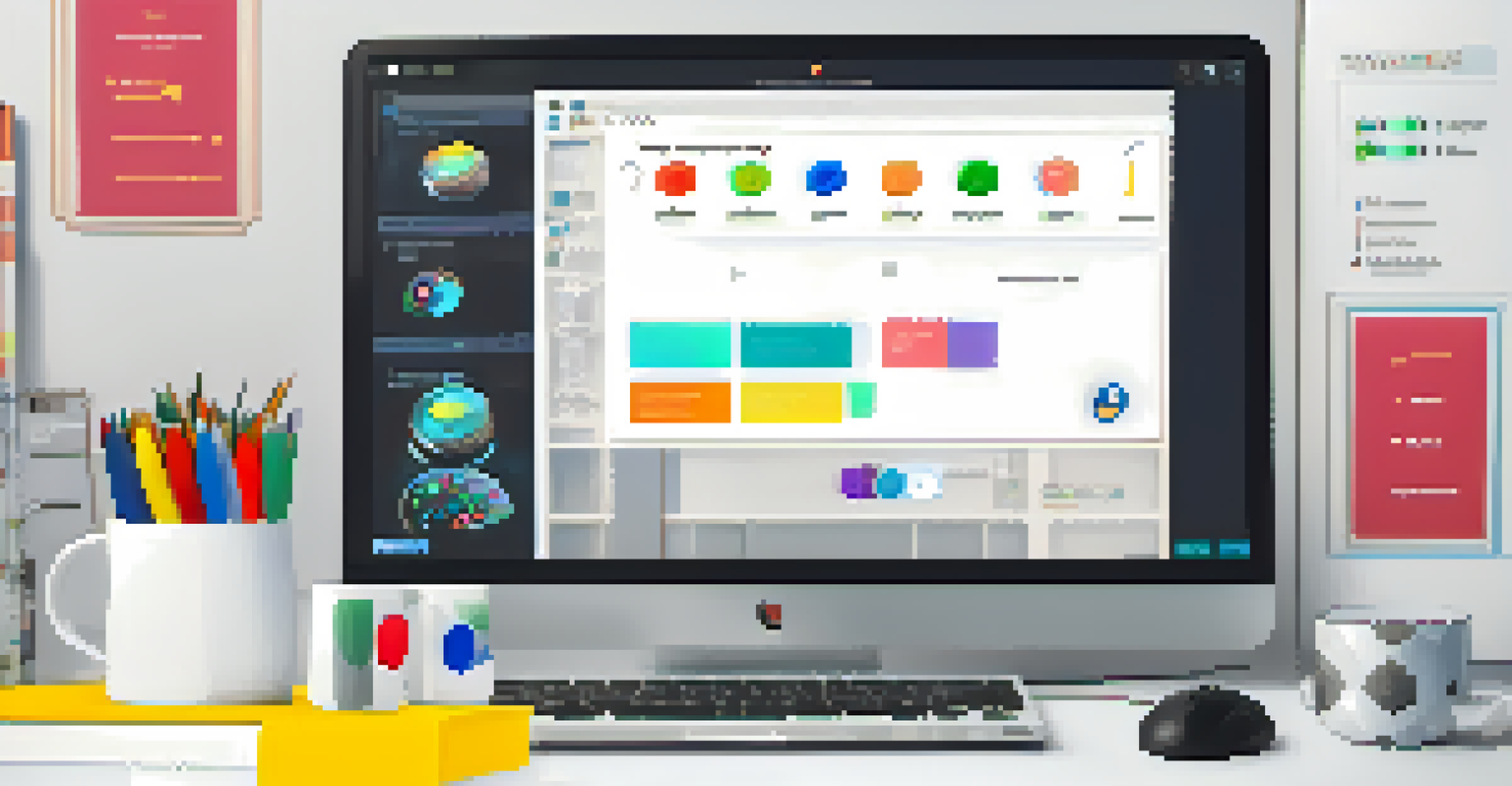Chatbot Development Tools: A Comprehensive Overview

Understanding Chatbot Development and Its Importance
Chatbot development involves creating software that can simulate conversation with users. These bots are increasingly becoming an integral part of customer service, marketing, and user engagement strategies.
Chatbots are not just tools; they are a bridge to better customer engagement and satisfaction.
By leveraging chatbots, businesses can provide instant responses to customer queries, reducing wait times and enhancing the user experience. This not only saves time for both the company and the customer but can also lead to increased sales.
With the rise of AI and natural language processing, the capabilities of chatbots have expanded significantly. Today's bots can understand context, provide personalized responses, and even learn from interactions, making them a powerful tool for any organization.
Key Features to Look for in Chatbot Development Tools
When choosing chatbot development tools, several key features should be prioritized. These include ease of use, integration capabilities, scalability, and the ability to handle multiple languages.

For instance, a user-friendly interface allows developers and non-developers alike to create bots without extensive programming knowledge. Integration with existing platforms, like CRM systems or social media, ensures a seamless experience for users.
Chatbots Enhance Customer Engagement
By providing instant responses, chatbots significantly improve user experience and can lead to increased sales.
Moreover, scalability is vital for businesses anticipating growth. As user interactions increase, the tool should be able to handle this surge without compromising performance.
Popular Chatbot Development Tools on the Market
Several chatbot development tools have gained popularity for their robust features and user-friendly interfaces. Some of the most notable ones include Dialogflow, Chatfuel, and Microsoft Bot Framework.
The future of customer service is not about humans versus machines, but rather humans working alongside machines.
Dialogflow, powered by Google, offers natural language understanding and integration with multiple platforms. It's particularly well-suited for developers looking to create sophisticated conversational interfaces.
On the other hand, Chatfuel allows users to build chatbots without coding, making it an excellent choice for marketers and business owners who want to engage customers quickly and efficiently.
Cost Considerations in Chatbot Development Tools
Understanding the cost of chatbot development tools is crucial for budgeting purposes. Costs can vary significantly based on features, user capacity, and support options.
Many tools offer tiered pricing models, ranging from free versions with basic functionalities to premium plans that include advanced features and support. It's important to evaluate what you need and choose a plan that aligns with your goals.
Key Features in Development Tools
When selecting chatbot development tools, prioritize ease of use, integration capabilities, and scalability.
Additionally, consider the long-term costs associated with maintenance and updates. A tool that may seem inexpensive initially could incur additional expenses down the line if it requires frequent upgrades.
Integrating Chatbots with Existing Systems
Seamless integration of chatbots with existing systems is vital for maximizing their effectiveness. This integration can involve connecting the bot to customer relationship management (CRM) systems, e-commerce platforms, or social media channels.
For example, if a chatbot is integrated with a CRM, it can access customer data to provide personalized recommendations and support. This level of personalization enhances the user experience and builds customer loyalty.
Furthermore, integration helps in gathering valuable data on customer interactions, which can be analyzed to refine marketing strategies and improve service offerings.
Best Practices for Chatbot Development
Implementing best practices in chatbot development can significantly boost their effectiveness. Start by clearly defining the purpose of the chatbot—whether it's for customer support, lead generation, or information dissemination.
Next, ensure that the bot can handle common queries efficiently while providing options for human assistance when needed. This hybrid approach ensures that users receive a seamless experience, even if the bot cannot fully address their needs.
Future Trends in Chatbot Technology
Advancements in AI and machine learning will enable chatbots to handle complex queries and deliver personalized interactions.
Finally, continuously monitor and analyze the bot's performance to refine its capabilities. Regular updates and improvements based on user feedback will keep the chatbot relevant and effective.
The Future of Chatbot Development Tools
The future of chatbot development tools looks promising, with advancements in artificial intelligence and machine learning driving significant changes. We can expect chatbots to become even more intuitive and capable of handling complex queries.
Moreover, as businesses increasingly focus on personalized customer experiences, chatbots will likely evolve to provide tailored interactions based on user behavior and preferences.

In the coming years, integration with emerging technologies such as augmented reality (AR) and voice search will further enhance the capabilities of chatbots, making them indispensable tools for businesses across various sectors.